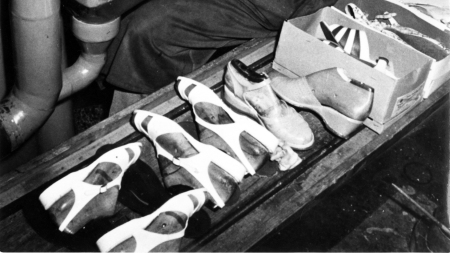F. Keyl shoe factory, later Raschufa, Gartenstraße 70
The Radebeul shoe factory, also known as Raschufa, was founded in Dresden-Gruna in 1916 as the F. Keyl shoe factory. In 1925, the company first moved to what is now Maxim-Gorki-Str. 30 and in 1933 to the modern new factory building on Gartenstraße, which was equipped with all the latest technological innovations. The company specialised in the manufacture of fabric shoes made of linen, velvet and satin, as well as beach shoes. It quickly developed in Radebeul into the largest company of its kind in the whole of Germany. While daily production in 1925 was 1,000 pairs, 10 years later it had risen to 12,000 pairs. After the Second World War, the company founder was dismissed as a reactionary by the works council in October 1945. Three years later, the company was expropriated and continued as VEB Radebeuler Schuhfabrik in VVB (Vereinigung Volkseigener Betriebe) Schuhe Elbe....
This might also interest you:
>> Audioguide Radebeul history(ies)
>> Treasures from the town archive
>> Town history
>> Histories



